British binoculars from the 1950s and 1960s

British made binoculars from the 1950s and 1960s are the best kept vintage secret. At the time firms such as Ross, Barr & Stroud and Wray struggled to compete against Japanese imports. They turned out well-made binoculars which were just too expensive in the highly competitive market.
Today, collectors focus on military binoculars or German made Zeiss binoculars. British made civilian binoculars from this era are largely ignored. Most benefit from coated lenses, a significant advance over pre-war glasses, and can offer top quality optics at bargain basement prices.
Bird watchers and amateur astronomers are starting to realise this and forums are beginning to buzz with questions about Ross Stepruvas or Barr & Stroud CF18s.
Grab yourself a bargain now, whilst they are still cheap!
Brief history
In the war years, UK binocular manufacturers concentrated exclusively on making military equipment. After the war they quickly switched back to civilian production. Most produced slightly updated version of pre-war models.
At the time, British made binoculars were an important part of our export drive and a Barr & Stroud binocular, the CF18, was chosen for the Britain Can Make It Exhibition in 1946. Unlike other exhibits, the Barr & Stroud binocular was not a new product. The company first introduced the design in 1929.

In the late 1940s British manufacturers enjoyed a modest boom as other countries, particularly their main competitors in Germany, were not in a fit state to market products effectively. The market-leading German firm of Zeiss found itself on the wrong side of the Iron Curtain. However, American soldiers helped some Zeiss personnel to escape to the West before new boundaries were drawn. Two rival Zeiss firms set up in business, one in the GDR and one in West Germany.
The British firms, Ross, Wray, Barr & Stroud and Kershaw concentrated, as they always had, on the top end of the market, producing high quality binoculars with prices to match.
They did little to push home their advantage over Zeiss and for the most part continued with pre-war designs. One modification they did make was to upgrade old designs with coated lenses. This was a Zeiss invention from 1939. It reduced unwanted reflection in the binocular and allowed the maximum amount of light to reach the eye.
In the 1950s and into the early 1960s binoculars were an exclusive and expensive product. In the 1960s only 0.2% of families had a pair (1). Whilst 20% of families had cameras, 20% had telephones and more than 75% had televisions.
There were some attempts to widen ownership by British firms. Both Ross and Wray launched cheaper ranges in 1957, the Ross Solaross and the Wray Wrayvu. Both ranges started at around £20. Before then you needed to pay much more for entry level binoculars by the top UK firms.
New owners of the Solaross got quality optics and a luxury velvet lined leather case. The binoculars were lightweight with more plastic parts than other Ross models.

Both Ross and Wray benefited from these new models and saw sales and profits rise. There was clearly a demand for cheaper glasses. In the 1950s and early 1960s this demand was met by French imports and by MOD surplus binoculars.
Barr & Stroud and Ross competed against their own products on the military surplus market. Glasgow-based retailer Charles Frank offered ex-military Ross 7x50 binoculars for £16 to £21. Frank stocked the civilian version of the same binocular, the Steplux, for £55 2s 4d.
The Consumer's Association Magazine, Which?, reviewed binoculars twice in the 1960s; in 1960 and again in 1969. In both reports they concluded that quality was proportional to price. British manufacturers were getting the quality right. Which?, never made allowances for home produced products, but praised the Wrayvu and Solaross in 1960 and gave the Barr & Stroud CF18 and CF24 binoculars best buy status in the most expensive category £35 to £50.
However, the sweet spot in the market was at the £20 level. With the growth in leisure and foreign travel, more and more people wanted binoculars, but could not afford British products. What the UK market wanted was slightly lower quality optics for a much cheaper price. In 1965 British consumers got their chance when the UK Government lifted restrictions on the import of Japanese binoculars.
The Japanese binocular industry had risen from nothing in 1945 to a world class standard by 1965. The Germans had been less worried about Japanese imports, but by 1963, 82% of all binoculars sold in West Germany were made in Japan. UK makers did not stand a chance.
Japanese made glasses were good quality. The Japanese Government carefully controlled the quality of exported goods and only those which earned the 'JL' symbol of quality were allowed to export. A favourable exchange rate also helped.
Initially Japanese binoculars were sold anonymously as 'Binoculars from Japan'. You could get an 8x40 binocular made by a good Japanese maker for £17 17 6d in 1966. No quality UK glasses were anywhere near this price. By the end of the decade names like Swift, Asahi Pentax, Canon, Yashica and Tasco were well known to British consumers.
One by one British manufacturers went out of business. Barr & Stroud ceased the manufacture of binoculars in 1971, preferring to concentrate on defence contracts, Wray also bowed out in 1971. Ross soldiered on until 1975, when the factory in Clapham finally closed.
The main reason why British manufacturers did not succeed was that they failed to provide the quality the market wanted at the price it wanted to pay. This does not mean that they did not make not excellent binoculars.
Today you can buy vintage British binoculars from the 1950s and 1960s at rock bottom prices. There is little interest from collectors, but bird watchers and amateur astronomers have already realised the potential of British made binoculars from this era.
If you are after top quality optics at reasonable prices then search for Ross, Wray, Kershaw and Barr & Stroud products on eBay. You might still find them going for just a few pounds at a car boot sale or charity shop.
Manufacturers and retailers
UK manufacturers
- Ross, based in Clapham closed 1975 - see guide to Ross models and Ross Solaross range.
- Wray, based in Bromley, Kent ceased manufacture 1971 - see guide to Wray models
- Barr & Stroud of Anniesland, Glasgow, ceased manufacture 1971 - see guide to Barr & Stroud models
- Kershaw, based in Leeds, ceased making binoculars in the late 1940s
Wray was a subsidiary of Dollond & Aitchison until 1962 when it was sold off. Wray was originally set up to manufacture binoculars for Aitchison, which had contracts with the UK military in World War I. Aitchison merged with Dollond in 1927 to become Dollond & Aitchison.
UK retailers
Retailers, as well as manufacturers, added their brand names to binoculars in the UK market.
- Dollonds
- Denhill
- Dixons
- Charles Frank
Dollonds
Dollonds was the photographic arm of the opticians Dollond & Aitchison. It was a major retailer of photographic equipment in the 1950s and 1960s. They had their own brand 'Dollond' binoculars. In the 1950s and early 1960s 'Dollond' binoculars were probably manufactured by Wray, which was a subsidiary. Dollonds sold binoculars from other makers including Zeiss, Ross, and Barr & Stroud.
Denhill
Denhill was the brand name of J A Davis & Sons Ltd of Denmark Hill, London SE5. The name came from the address. Denhill was an importer of European-made binoculars. The binoculars were made in France and Germany. They were branded Denhill and sold in the UK. The well-known sports commentator, Raymond Glendenning, put is name to Denhill's advertising.
Read more about Denhill binoculars
Dixons
Dixons started as a photographic studio before the Second World War. In the 1950s Dixons started to sell photographic equipment by mail order. They mainly sold binoculars under the Prinz brand
Charles Frank
Charles Frank from Glasgow was another large UK retailer of binoculars. They stocked a whole range of binoculars from some of the cheapest Hong Kong-made imports and ex-military binoculars, to the most expensive models. In the second half of the 1960s Charles Frank imported binoculars from Japan under the brand name Frank-Nipole.
Binoculars from Japan
From being almost unknown to the British public in 1965, a large number of Japanese manufacturers were selling binoculars by the end of the 1960s. The following list is of Japanese makers selling binoculars in the UK in 1969:
- Concord
- Greenkat
- Frank-Nipole
- Tohyoh
- Hilkinson
- Yashica
- Swift
- Canon
- Asahi Pentax
- Tasco
Source: Which? published 5 June 1969 and contemporary advertisements.
Read more about vintage Japanese binoculars
Values
Binoculars in working condition, free from major faults and good cosmetic condition:
- Barr & Stroud 6x24, 6x30.5, 8x30.5 - £20 to £50
- Barr & Stroud 7x42, 7x50, 10x50, 12x50, 15x60 - £40 to £100
- Ross Solaross (except 16x60) - £15 to £40
- Ross Solaross 16x60 - £40 to £60
- Ross Stepruva 9x35 - £20 to £50
- Ross Stepvue 8x30 - £30 to £50
- Ross Stepmur 10x50 - £30 to £80
- Ross Stepsun 12x50 - £30 to £80
- Ross Enbeeco 13x60 - £40 to £50
- Wray Eleven 11x60 - £25
- Wray Nine 9x60 - £25
- Wray Wraylite 8x30 - £15
- Wray Wrayvu - 8x40 - less than £10
- Wray Magnivu 8x30 - less than £10
- Wray Clearvu 8x30 - less than £10
Top tips
Avoid binoculars with optical faults
Avoid binoculars with any of the following problems:
- Collimation faults - double vision
- Mould inside the binocular
- Damage to lenses
- Loose lenses
- Lenses that need cleaning inside the binocular
Many of these faults are listed by eBay sellers; I would avoid these and look for binoculars with no faults. These faults will be expensive or impossible to fix, unless you are an expert.
Read more
References
(1) The Times, March 1967
By Steven Braggs, May 2014
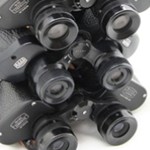
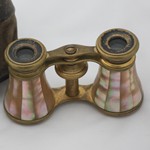
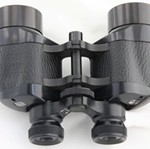
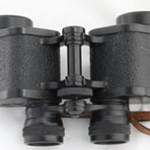
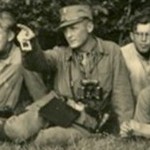
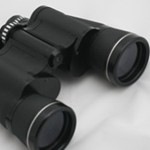


Comments